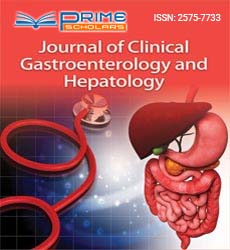Perspective - (2023) Volume 7, Issue 6
Understanding Hemochromatosis: The Silent Iron Overload
Keiko Abe*
Department of Gastroenterology, University of Chicago, USA
*Correspondence:
Keiko Abe,
Department of Gastroenterology, University of Chicago,
USA,
Email:
Received: 29-Nov-2023, Manuscript No. IPJCGH-24-18982;
Editor assigned: 01-Dec-2023, Pre QC No. IPJCGH-24-18982 (PQ);
Reviewed: 15-Dec-2023, QC No. IPJCGH-24-18982;
Revised: 20-Dec-2023, Manuscript No. IPJCGH-24-18982 (R);
Published:
27-Dec-2023, DOI: 10.36648/2575-7733.7.6.57
Introduction
Hemochromatosis is a genetic disorder characterized by
excessive iron absorption from the diet, leading to iron
overload in the body’s tissues and organs. This condition, often
referred to as iron overload disease, can have serious health
implications if left untreated. In this article, we will explore
the causes, symptoms, diagnosis, and treatment options for
hemochromatosis. Hemochromatosis is primarily an inherited
disorder caused by mutations in the gene. The gene plays a
crucial role in regulating the absorption of dietary iron in the
small intestine. When mutations occur, the body tends to
absorb more iron than it needs, resulting in the accumulation
of excess iron over time. While the majority of individuals with
hemochromatosis inherit the condition from both parents,
some may carry a single mutated gene, making them carriers
without exhibiting symptoms.
Description
Hemochromatosis is often referred to as a “silent” disease
because symptoms may not manifest until iron levels have
reached critical levels. Common symptoms include fatigue,
joint pain, abdominal pain, and unexplained weight loss.
As iron accumulates in organs such as the liver, heart, and
pancreas, it can lead to more severe complications like
cirrhosis, heart problems, and diabetes. Early detection and
intervention are crucial in preventing these complications.
Diagnosing hemochromatosis typically involves a combination
of medical history, physical examination, and laboratory tests.
Blood tests measuring serum iron levels, transferrin saturation,
and ferritin levels are commonly used for diagnosis. Genetic
testing may also be employed to identify mutations in the
HFE gene. Imaging studies, such as MRI or liver biopsy, may
be recommended to assess the extent of iron deposition in
the organs. The primary goal of treating hemochromatosis is
to reduce iron levels in the body and prevent organ damage.
Phlebotomy, a process similar to blood donation, is a common
and effective treatment method. During phlebotomy, a certain
amount of blood is withdrawn from the body regularly to reduce
iron levels. The frequency of phlebotomy sessions depends
on the severity of iron overload and individual response to
treatment. For individuals who cannot undergo phlebotomy
due to medical reasons, iron-chelating medications may be
prescribed. These medications help the body eliminate excess
iron by binding to it and facilitating excretion. While they are
not as widely used as phlebotomy, they can be an alternative
for certain patients. In addition to medical interventions,
individuals with hemochromatosis can make certain lifestyle
changes to manage their condition. Dietary modifications,
such as avoiding iron supplements and limiting iron-rich
foods, can help prevent further iron accumulation. Regular
monitoring of iron levels and overall health is essential to
track progress and make adjustments to the treatment plan as
needed. Hemochromatosis is a hereditary disorder that, if left
untreated, can lead to serious health complications.
Conclusion
Early detection and management are crucial for preventing
organ damage and improving the quality of life for individuals
with this condition. With advancements in genetic testing and
treatment options, healthcare professionals can better identify
and address hemochromatosis, allowing affected individuals to
lead healthy and fulfilling lives. If you suspect you may have
hemochromatosis or have a family history of the condition,
itâ??s important to consult with a healthcare provider for proper
evaluation and guidance.
Citation: Abe K (2023) Understanding Hemochromatosis: The Silent Iron Overload. J Clin Gastroenterol Hepatol. 7:57.
Copyright: © 2023 Abe K. This is an open-access article distributed under the terms of the Creative Commons Attribution License,
which permits unrestricted use, distribution, and reproduction in any medium, provided the original author and source
are credited.

